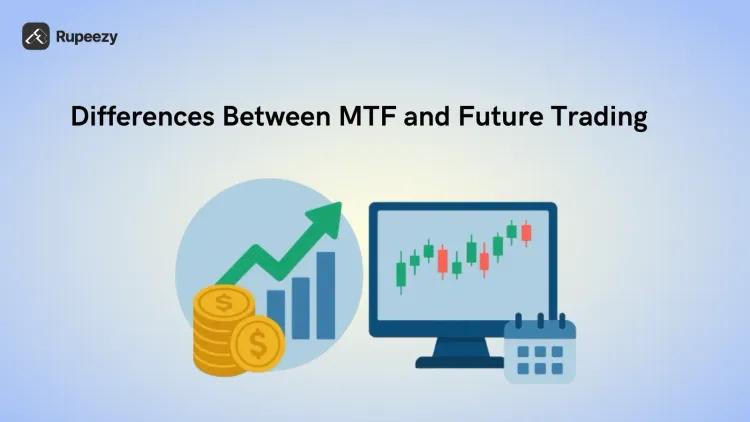Income Tax on F&O Trading in India


00:00 / 00:00
As profitable as Futures and Options trading can be in the stock market, its taxation system is equally complicated. Many people make good profits in this, but when it comes to income tax on F&O trading in India, confusion begins. Should it be considered business income? Which ITR to fill? Is it necessary to get an audit done or not? In this blog, we will understand every aspect of tax on F&O trading in simple language - from tax slab to audit rules and ITR filing, so that you can deal with tax along with profit.
What is Futures and Options Taxation?
Income from F&O trading is considered business income, not capital gains. Therefore, income tax is levied on it in the same way as on a small business. This is called Futures and Options Taxation. This means that the trader has to show his entire profit or loss and pay tax on that basis. This income has to be combined with his salary or any other income, and tax has to be paid according to the slab.
Why Is Tax on F&O Trading Different?
The turnover in F&O trading is very high because it is leveraged trading. Here, a big position is taken with a small capital, due to which both profit and loss can increase rapidly. Due to this high-volume nature, its tax rules become different and a little technical compared to mutual funds or delivery stocks.
Is F&O Income Business Income or Capital Gains?
According to the Income Tax Department, the income from Futures and Options (F&O) is considered as Business Income and not Capital Gains. The reason for this is that F&O is not a speculative product but is classified as a non-speculative business activity.
That is, if you trade in F&O, whether occasionally or on a regular basis then the profit or loss from it will be considered as part of your business income. Therefore, this income has to be combined with salary or other income, and tax has to be paid as per the individual tax slab.
Speculative vs Non-Speculative Income
Particulars | Speculative Income | Non-Speculative Income (F&O) |
Example | Intraday Equity Trading | F&O Trading (Nifty, Stocks, etc.) |
Holding Period | Same day buy & sell | Position can be carried forward |
Tax Treatment | Business Income (Speculative) | Business Income (Non-Speculative) |
Loss Set-off Rules | Only against speculative gain | Can be set-off against any business income |
ITR Filing | ITR-3 | ITR-3 |
Let us understand this with a real example :
Suppose A Person who is a salaried employee whose annual income is Rs. 8 lakhs. He earned a profit of Rs. 2.5 lakhs from F&O trading in a year.
Now his total income will be: Rs. 10.5 lakhs
He has to show this Rs. 2.5 lakhs as business income in ITR
And pay tax on the entire Rs. 10.5 lakhs as per the individual slab
If his turnover limit exceeds and the profit is less than 6%, then there may also be an audit requirement (which will be explained in detail in the next sections).
F&O Tax Rate Slabs
Futures & Options is considered as business income and taxation on it comes under Section 44ADA and 44AB of the IT Act. But the tax rates depend on whether you choose the old tax regime or the new tax regime.
F&O Tax in Old Regime
Total Income (Old Regime) | Tax Rate |
Up to Rs. 2.5 lakh | Nil |
Rs. 2.5 lakh – Rs. 5 lakh | 5% |
Rs. 5 lakh – Rs. 10 lakh | 20% |
Above Rs. 10 lakh | 30% |
In this system, you can avail all the deductions like 80C, 80D, HRA, Home Loan Interest, etc.
Therefore, this can be beneficial for those who save a lot of tax.
F&O Tax in New Regime
In the new regime, F&O tax percentages are divided into more slabs, but deductions are not allowed (except for a few selected ones). Below are the tax slabs for the new regime:
Total Income (Old Regime) | Tax Rate |
Up to Rs. 3 lakh | Nil |
Rs. 3 lakh – Rs. 6 lakh | 5% |
Rs. 6 lakh – Rs. 9 lakh | 10% |
Rs. 9 lakh – Rs. 12 lakh | 15% |
Rs. 12 lakh – Rs. 15 lakh | 20% |
Above Rs. 15 lakh | 30% |
In this regime, everyone gets the benefit of the Standard Deduction of Rs. 50,000, but other deductions (like 80C) are not allowed.
How Is F&O Income Taxed?
The profit from F&O is added to your “Business Income”.
That income is then taxed as per your chosen tax regime (Old or New Regime).
If there is any loss, you can carry forward the loss for the next 8 years (if ITR is filed on time).
Which Expenses Can You Deduct (Allowable Expenses)
While calculating tax on F&O income, you can deduct certain expenses, such as:
Brokerage Charges
Advisory Fees or Trading Software Fees
Internet Charges, Electricity Bills (if used for trading)
Depreciation on Laptop/Desktop
Demat and Bank Charges
Turnover Calculation in F&O Trading
The definition of turnover in Futures and Options trading is slightly different from normal business. Here, the turnover is not based only on the amount of purchase and sale, but on the absolute profit or loss.
What Is Included in Turnover?
The following are taken into account for calculating turnover in F&O trading:
Profit: If a deal is profitable, then that profit is added to the turnover.
Loss: If there is a loss in the deal, then that also has to be added to the turnover (as an absolute figure).
Premium Income (for Options): The premium received on the options sold is also added to the turnover.
Reverse Trades: If the same contract is bought and sold on the same day, then the difference on both sides is counted in the turnover.
How to Calculate Turnover as per ICAI
According to the Institute of Chartered Accountants of India (ICAI), turnover is calculated using the "Absolute Profit or Loss Method". This means that the sum of both profit and loss is considered as turnover, irrespective of whether your net result at the end of the year is in loss or a profit.
Example:
One F&O trade made a profit of Rs. 1,20,000
The other one made a loss of Rs. 90,000
So Total Turnover = Rs. 1,20,000 + Rs. 90,000 = Rs. 2,10,000
Why is it Important to Calculate Turnover?
Accurate assessment of turnover in F&O is important because:
It determines whether you need to get a Tax Audit done or not
The correct ITR form can be selected for ITR filing
The actual scale of the business and returns can be accurately reflected
When is an Audit Required for F&O Trading?
Under certain circumstances, a tax audit becomes mandatory. Let’s understand in detail below:
Audit Limit as Per Section 44AB
If your annual turnover from F&O trading is more than Rs. 10 crore, then a tax audit is mandatory — provided you have done all the transactions through banking channels and the cash transactions do not exceed Rs. 5%. If the cash transactions are higher, then this limit comes down to Rs. 1 crore.
Section 44AD and Presumptive Taxation – What Applies?
Under Section 44AD, small businesses get the benefit of a presumptive taxation scheme, but F&O trading falls under the category of speculative or derivative business, due to which this scheme is not applicable here.
Which ITR Form to File for F&O Trading?
Here are the forms you need to complete for futures and options taxation:
F&O trading can be reported in either ITR-3 or ITR-4 under the Income Tax Act, but which form is right for you depends on your income structure and accounting methodology:
ITR-3: If you want to show all the income and expenses of your F&O transactions in detail, and you have professional accounting (e.g., P&L statement, balance sheet, etc.), then ITR-3 is the appropriate form.
ITR-4: If you are reporting income on a presumptive basis (under 44AD), and your turnover is less than Rs. 2 crore, then you can choose ITR-4. But use this form only if you do not have an audit requirement.
If you have made a loss in F&O and want to carry forward it in the future, then ITR-3 is required, as a loss cannot be carried forward in ITR-4.
Mandatory Disclosures for F&O Trading
F&O is considered a business, so special information has to be given to the Income Tax Department:
Profit & Loss Statement: In which the total income from your trading, expenses, brokerage, exchange fees, internet, and other expenses are mentioned.
Balance Sheet: In which the assets, liabilities, cash, and bank balance related to the business have to be shown.
Both these documents are mandatory in ITR-3, especially if you are not filing under the presumptive tax scheme.
What Are the Documents Required Before Filing ITR?
For F&O traders, keep the following documents ready before filing ITR:
Trading report: detailing your F&O turnover for the year, profit/loss, charges, etc. (provided by the broker)
Bank statement: to verify expenses and deposits.
Breakup of brokerage charges and exchange fees
GST details (if applicable)
PAN, Aadhaar, and the previous year's ITR copy (for reference)
Common Mistakes Traders Make While Filing ITR
Choosing the wrong ITR form: Many traders file ITR-2, considering only capital gains, while F&O is always considered as business income.
Not calculating proper turnover: The definition of turnover in F&O is different – not just buy/sell value, but the sum of net profit/loss is considered as turnover.
Not reporting or forwarding losses: Many times, traders avoid reporting losses or fill in the wrong forms, which prevents them from setting off the losses in subsequent years.
Ignoring audits: If the turnover reaches Rs. 10 crore (more than 95% of transactions are in digital mode), then a tax audit may be necessary. Many ignore this.
Inappropriate expense reporting: Some traders even add expenses that are not justified from a business point of view - this increases the risk of scrutiny.
Conclusion
Investment related to Futures & Options (F&O) is constantly increasing in India, but the risks are also equally big. This market can be beneficial for those who trade with research, discipline, and risk management. The recent strictness of the government and SEBI shows that it is no longer wise to enter it with the intention of making short-term profits only. If F&O trading is to be made permanent and safe in the coming times, then investors themselves will have to take cautious and informed decisions.
FAQs
Q1. Is income from F&O trading taxable in India?
Yes, income from F&O trading is considered taxable and is classified as business income.
Q2. What ITR form should I file for F&O trading income?
Usually ITR-3 form is to be filled out to show F&O trading income as it is considered business income.
Q3. Do I need to maintain books of accounts for F&O trading?
Yes, if your F&O income or turnover is above a limit, then you may have to maintain proper books of accounts.
Q4. Is an audit mandatory for F&O traders?
If your turnover is less than Rs. 10 crore and you have transacted through digital mode, then an audit is not mandatory, but an audit may apply in certain situations.
Q5. Can I claim expenses against my F&O income?
Yes, you can deduct brokerage, internet, advisory, and other necessary expenses from F&O business income.
The content on this blog is for educational purposes only and should not be considered investment advice. While we strive for accuracy, some information may contain errors or delays in updates.
Mentions of stocks or investment products are solely for informational purposes and do not constitute recommendations. Investors should conduct their own research before making any decisions.
Investing in financial markets are subject to market risks, and past performance does not guarantee future results. It is advisable to consult a qualified financial professional, review official documents, and verify information independently before making investment decisions.

All Category










